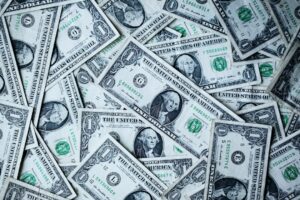Colorful Strategies for Forex Trading: How to Use Colors to Improve Your Trading Performance
Forex trading is a highly dynamic and fast-paced market, where traders need to make split-second decisions to capitalize on market movements. In such an intense environment, any advantage that can help improve trading performance is invaluable. One often overlooked aspect that can enhance trading efficiency is the use of colors.
Colors play a significant role in our lives, influencing our emotions, thoughts, and behaviors. Similarly, colors can be utilized in forex trading to improve decision-making, reduce errors, and enhance overall performance. In this article, we will explore various ways to incorporate colors into your forex trading strategies.
Color-Coding Price Movements
One of the most effective ways to use colors in forex trading is by color-coding price movements. By assigning different colors to specific price movements, traders can quickly identify patterns and make informed decisions. For example, traders can use green to represent upward price movements, red for downward movements, and yellow for consolidation or range-bound periods.
By visually highlighting price movements, color-coding allows traders to identify trends, support, and resistance levels more easily. It helps traders spot potential entry and exit points, enabling them to make quicker and more accurate trading decisions. Moreover, color-coding price movements can also reduce cognitive load, making it easier to process vast amounts of information in a short period.
Color Psychology and Chart Analysis
In addition to color-coding price movements, understanding color psychology can be beneficial in forex trading. Different colors evoke different emotions and have varying psychological effects on traders. By incorporating colors that align with desired trading outcomes, traders can enhance their decision-making process.
For example, the color green is often associated with growth, prosperity, and positivity. Traders can use green to represent profitable trades or to highlight areas of potential profit. On the other hand, the color red is commonly associated with danger, caution, and loss. Traders may use red to identify potential risks or to indicate areas of potential stop-loss levels.
By leveraging color psychology, traders can create a more intuitive and emotionally intelligent trading environment. This can help in maintaining discipline, managing emotions, and making rational decisions during highly volatile market conditions.
Color-Coded Indicators and Technical Analysis
In forex trading, technical analysis is a crucial component of decision-making. Traders rely on various indicators to identify trends, predict price movements, and determine entry and exit points. By color-coding these indicators, traders can efficiently interpret and utilize these tools.
For example, traders can assign different colors to moving averages based on their timeframes. This allows for quick identification of crossovers and trend changes. Similarly, Fibonacci retracement levels can be color-coded to indicate key support and resistance levels. By visually representing these levels, traders can easily identify potential reversal or breakout areas.
Color-coding indicators can significantly streamline the analysis process, saving time and reducing errors. It allows traders to focus on the most critical information and make informed decisions in a fraction of the time it would otherwise take.
Color as a Risk Management Tool
In addition to enhancing trading decisions, colors can also be utilized as a risk management tool. By assigning colors to different risk levels or position sizes, traders can quickly identify and manage their risk exposure.
For instance, traders can use green to represent low-risk trades, yellow for moderate risk, and red for high-risk trades. By color-coding position sizes accordingly, traders can easily gauge their overall risk exposure at a glance. This helps in maintaining a balanced and well-diversified portfolio, reducing the potential for significant losses.
Furthermore, colors can also be used to identify stop-loss and take-profit levels. For example, traders can use green to represent take-profit levels and red for stop-loss levels. By visually differentiating these levels, traders can quickly assess potential risk-reward ratios and adjust their positions accordingly.
In conclusion, colors can be a powerful tool in forex trading. By incorporating color-coded price movements, leveraging color psychology, utilizing color-coded indicators, and employing colors for risk management, traders can improve their trading performance. The use of colors not only enhances decision-making but also reduces cognitive load, saves time, and helps manage emotions. By embracing colorful strategies, traders can navigate the forex market with greater efficiency and confidence.





